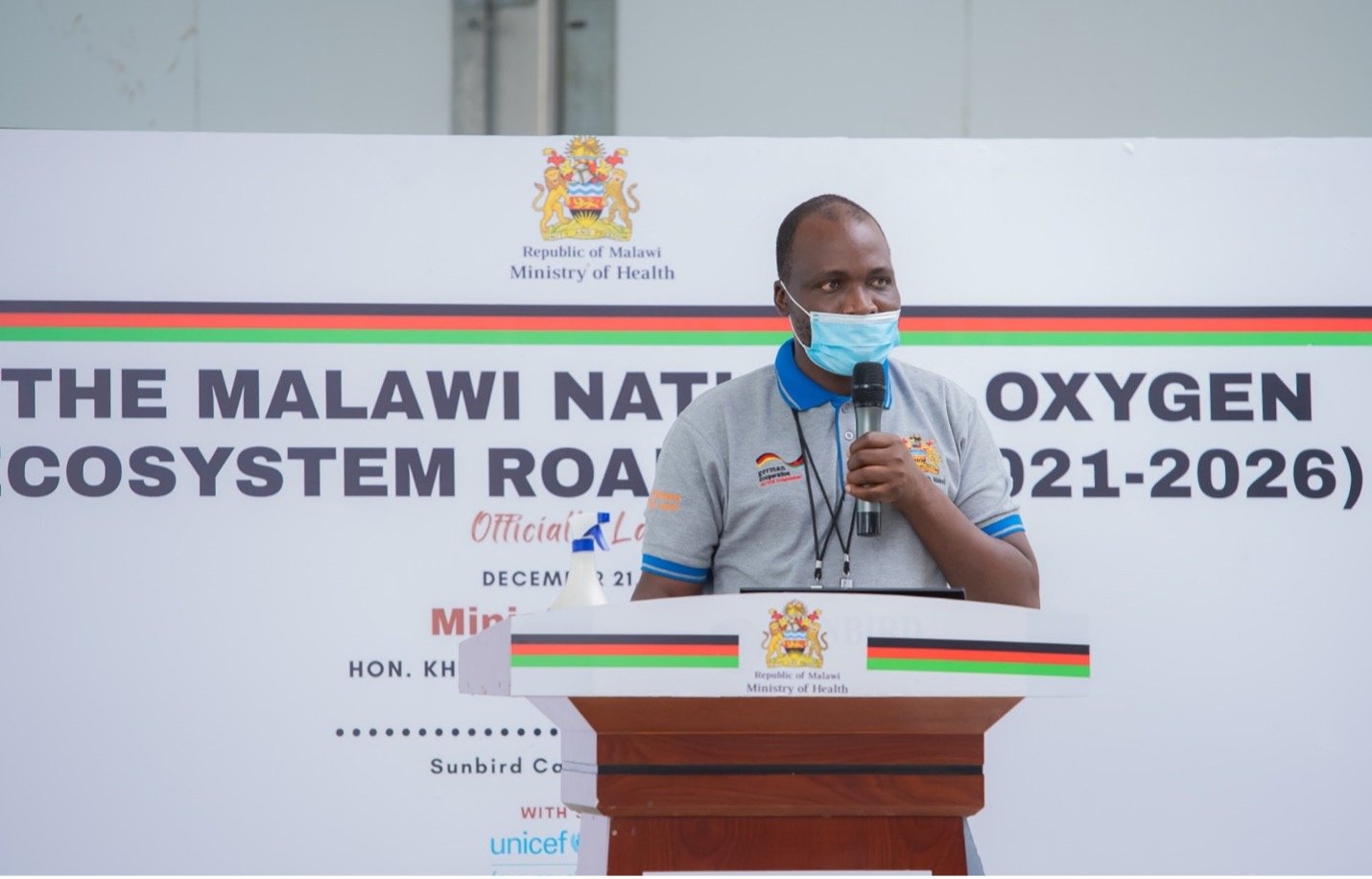Despite being a crucial treatment for various health conditions, access to oxygen has been long overlooked in health system planning. This became clearer than ever during the COVID-19 pandemic when oxygen needs skyrocketed around the world. In Malawi, like in many other countries, the health system was unable to meet the rising oxygen demand.
In December 2021, Malawi’s Ministry of Health (MOH), with support from PATH and UNICEF, launched the Malawi National Medical Oxygen Ecosystem Roadmap as part of its comprehensive plan to address the long-standing challenge of medical oxygen access. The roadmap, which complements the Malawi MOH’s Emergency and Critical Care Strategy, offers a detailed and achievable plan for creating and maintaining a comprehensive national medical oxygen ecosystem.
Its main objective is to lower hypoxemia-related morbidity and mortality while ensuring that oxygen therapy is broadly available for all patients who need it.

Figure 1. The oxygen roadmap’s ten strategic objectives.
Progressing toward a sustainable oxygen ecosystem
Since the roadmap’s launch last year, the MOH set out to create an enabling environment for a sustainable medical oxygen ecosystem. Through the engagement of different levels of government, the MOH disseminated the national roadmap to district councils, with the aim of incorporating oxygen development in the district implementation plans and budgets. A key consideration for these events was understanding and accounting for the differing priorities of district councils and individual health facilities to maximize the roadmap’s implementation at the lowest level of the health system.
Next, the MOH carried out a review of policies, standards, and guidelines governing medical oxygen. As part of this work, PATH helped develop an updated Standard Equipment List—a document that outlines the minimum equipment required at every health facility in the country. This was an iterative process that involved multiple stakeholders and carefully considered an appropriate balance between essential and supportive equipment for the list. A key outcome of this initiative was the inclusion of oxygen and pulse oximetry into the norms, standards, and clinical guidelines for each level of health facilities.
Health care workers are critical to administering oxygen to patients. For this reason, the roadmap called for building the capacity of health workers to safely use medical oxygen, pulse oximetry, and oxygen accessories. Together with Partners In Health and UNICEF, PATH developed the Malawi Oxygen Treatment Guidelines and Standard Operating Procedures—a step-by-step guide for health workers to follow when using different oxygen delivery devices. The SOPs include both safety and general equipment care guidelines to extend the life span of medical devices and improve safety of both health workers and patients.
To strengthen monitoring and evaluation of oxygen system improvements, the MOH, with support from PATH, UNICEF, Partners In Health, and the World Bank, has developed a set of national indicators for oxygen. The indicators cover clinical usage of oxygen, oxygen production and supply chain indicators, and tracking of national scale-up of oxygen. They take into account existing capacity to collect the required data and how easily they can be incorporated into existing reporting systems to reduce workload and maximize uptake.

Norman Lufesi, Acting Chief of Emergency and Critical Care Services for the Malawi Ministry of Health, presents during the launch of the Malawi National Medical Oxygen Ecosystem Roadmap in Lilongwe. Photo: PATH.
Next steps for achieving equitable oxygen access
To continue driving forward progress toward oxygen access, next steps will focus on overcoming the following key remaining barriers.
Building sustainable funding: External donors and partners have shown increased interest in oxygen ecosystem financing, but a reliance on grants and partner support is not sustainable. Moving forward, a key focus is to advocate for the national government to prioritize oxygen spending and infrastructure investments.
Under one potential financing model, health facilities pay for oxygen sourced from other public oxygen generation plants. Those payments would be incorporated into a government-run oxygen funding pool to support routine maintenance and repairs. Under another model, the government and external partners develop and manage a broader “oxygen fund,” which would follow the scale-up priorities set by the Malawi Oxygen Emergency Taskforce. PATH is advocating to pilot such financing mechanisms under the new Global Fund COVID-19 Response Mechanism portfolio optimization.
Scaling oxygen production capacity and diversifying supply sources: As part of its COVID-19 response, the government has allocated oxygen generation plants or liquid oxygen tanks to additional health facilities. While it has taken time to finalize procurement plans, oxygen generation plants will soon be installed at four facilities in Malawi.
The new plants will mean increased oxygen production capacity, which will need to be supported by strengthened maintenance—both in terms of availability of biomedical technicians and necessary spare parts. It will be critical that proper maintenance has dedicated funding for operational expenditures to reduce downtime from breakages.
Using oxygen data for decision-making: Maximizing investments in oxygen will rely on gathering and using data—to estimate oxygen needs, plan for distribution of bulk oxygen production, and inform procurement choices. Routine reviews of clinical data on oxygen will be a vital next step to inform decision-making at the facility level.
Another key priority is establishing a system with accurate data on oxygen production and consumption that is integrated into routine data collection and existing health information systems. To achieve this, the MOH plans to scale up the implementation of oxygen indicators to all health facility levels and conduct national trainings on data reporting and use.
As the roadmap enters its second year of implementation, building a sustainable oxygen ecosystem in Malawi will require continued prioritization by the government, sustained financing and investment, and a consistent reserve of the supplies and human resources to administer oxygen safely.
Only through investments in these efforts will Malawi be able to scale up oxygen access effectively across all levels of the health care system to ensure this lifesaving commodity is available for all patients who need it.



